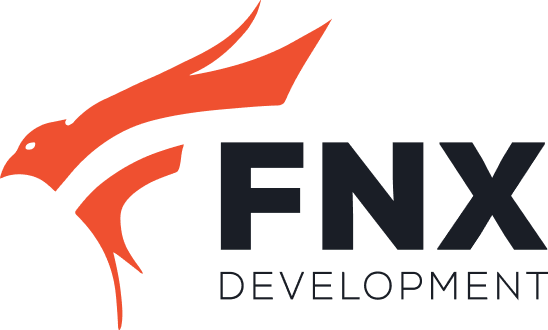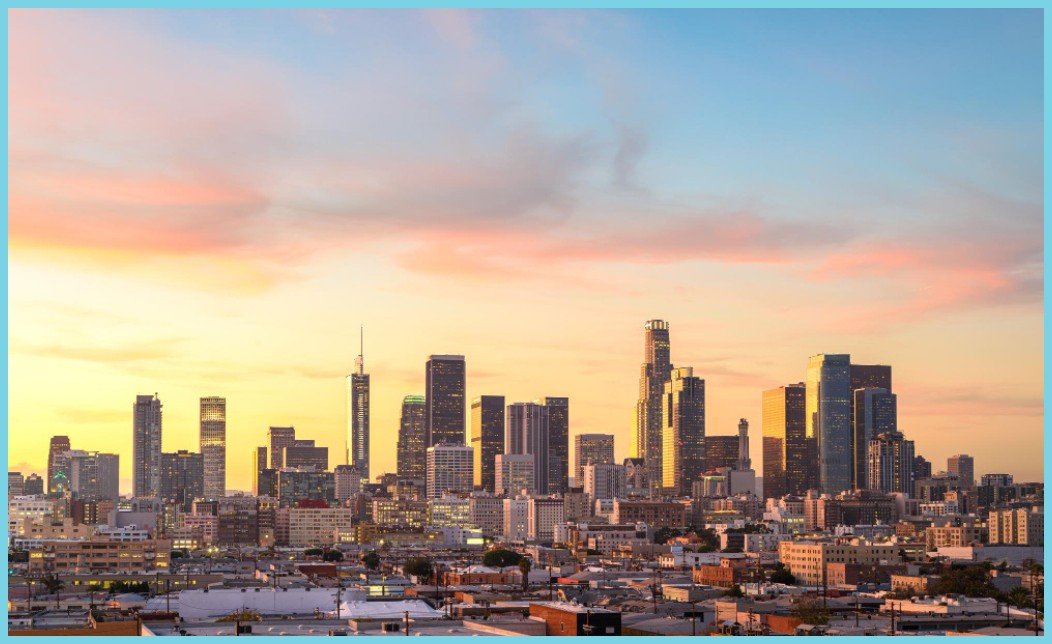The Impact of Affordable Real Estate Development on Downtown LA's Revitalization
In the heart of Los Angeles, amidst the towering skyscrapers and bustling streets, a quiet transformation is taking place. Downtown LA, once seen as a neglected urban core, is experiencing a renaissance, and at the forefront of this revival is the strategic development of affordable real estate.
In this article, we delve into the remarkable story of how affordable housing initiatives and real estate investment funds play a pivotal role in revitalizing downtown Los Angeles.
Reviving a Forgotten Gem
For years, the glamor of its more affluent neighbors had overshadowed downtown Los Angeles. Neglected streets, vacant buildings, and a lack of economic activity had cast a shadow over this historic area. However, recent years have witnessed a remarkable turnaround. Downtown LA has emerged as a vibrant hub, attracting residents, businesses, and cultural enthusiasts alike.
This urban revival can be attributed to a combination of factors, with strategic real estate development playing a pivotal role. Let's examine how this transformation has unfolded and explore its potential for the city's economic and social landscape.
Urban Renaissance - A Collaborative Effort
Downtown Los Angeles' revitalization is a testament to the power of collaborative efforts between public and private sectors, local communities, and visionary real estate developers. This resurgence has been driven by a shared commitment to transform the city's heart into a thriving, inclusive, and economically vibrant urban center. There are five critical factors in this regeneration.
1. Affordable Housing Initiatives
One of the most significant drivers of change has been the emphasis on affordable housing initiatives. In 2022, Los Angeles desperately needed affordable housing solutions to address homelessness and housing insecurity. Organizations, including the Los Angeles Housing Department and private real estate developers, recognized the urgency and embarked on ambitious initiatives, including providing permanent supportive housing (PSH) assistance to over 29,000 households of formerly homeless and chronically homeless individuals and families through rental subsidy programs.
2. Job Creation and Economic Growth
The strategic development of downtown Los Angeles has transformed the skyline and contributed significantly to job creation and economic growth. A huge boost in construction activities has marked this resurgence, the renovation of commercial spaces, and the influx of businesses, which have generated employment opportunities for residents.
According to the Los Angeles Planning City Organization, by 2040 downtown Los Angeles will have created more than 55,000 additional jobs.
The report highlights the diverse employment landscape due to the area's revitalization.
This remarkable job creation reduces unemployment rates and bolsters the city's overall economic stability. It provides opportunities for residents of downtown Los Angeles to secure stable employment and improve their quality of life.
As downtown Los Angeles continues evolving as a dynamic economic hub, the job market is expected to grow further. The influx of businesses, cultural institutions, and residents has created a ripple effect, stimulating demand for various services and industries. This, in turn, fosters a climate of economic vibrancy, making downtown LA an attractive destination for job seekers and entrepreneurs alike.
The collaborative efforts of public and private sectors, coupled with the commitment of real estate developers to breathe new life into this historic area, have not only revitalized downtown Los Angeles but have also ignited a resurgence in job opportunities and economic growth, bringing renewed hope to the heart of the city.
3. Cultural Resurgence
Downtown LA's revitalization extends beyond economics, fostering a cultural resurgence. The emergence of art galleries, theaters, and cultural events has turned this once-neglected area into a cultural hotspot. The Broad Museum, for instance, has become an iconic landmark, drawing art enthusiasts from across the globe. Another great example would be the fantastic renovation of the Nimoy Theater by UCLA.
4. Community Bonding
Real estate development has played a crucial role in strengthening community bonds. Creating public spaces, parks, and recreational facilities has provided residents with connecting gathering spots, enhancing the sense of belonging in the downtown area.
5. Sustainable Practices
Sustainability has emerged as a core principle driving many development projects in the quest to revive downtown Los Angeles. Incorporating eco-friendly designs and energy-efficient features in new buildings enhances the city's aesthetic appeal and aligns perfectly with Los Angeles' unwavering commitment to environmental stewardship and a greener future.
One of the pivotal initiatives in this regard is the Sustainable City pLAn, championed by the Mayor's Office of Los Angeles. This comprehensive sustainability plan outlines a vision for a more sustainable, resilient, and equitable city. It emphasizes the importance of reducing greenhouse gas emissions, conserving water, and promoting renewable energy sources. Many real estate developers have embraced the principles of this plan in their projects, contributing to a more sustainable urban landscape.
Developers have integrated eco-friendly features into their buildings as part of their commitment to sustainability. These include energy-efficient lighting systems, solar panels, green roofs, and recycled materials in construction. These sustainable practices reduce the environmental footprint of downtown Los Angeles and lead to long-term cost savings for both building owners and occupants.
Furthermore, the city's focus on sustainability extends beyond individual buildings to encompass entire neighborhoods. Urban planning strategies now prioritize walkability, access to public transportation, and creating green spaces. These efforts promote a healthier and more active lifestyle for residents and reduce dependence on cars, thereby lowering carbon emissions.
The Affordable Housing Imperative
As we mentioned, one of the driving forces behind this revival is the strategic development of affordable housing units. As an August 2023 article in The Guardian explains, Los Angeles, like many major cities, is experiencing an acute housing affordability crisis. The soaring cost of living and housing leaves many individuals and families struggling to find affordable shelter, perpetuating the cycle of homelessness and poverty.
To address this crisis, a new wave of real estate developers and investors has taken the initiative to create affordable housing options within downtown Los Angeles. These initiatives prioritize making housing accessible to a wide range of income groups, providing an entry point to those who have long been priced out of the market.
The Economic Impact
The impact of affordable housing development on downtown LA's economy cannot be overstated. By providing affordable housing options, these developments attract diverse residents, including young professionals, artists, and service workers. This influx of residents, in turn, stimulates the local economy.
New businesses sprout up to cater to the needs of the growing population. Restaurants, cafes, and shops find a customer base in the newly arrived residents. This not only creates job opportunities but also contributes to the overall vibrancy of the neighborhood.
Moreover, the construction of affordable housing units itself generates employment. Architects, builders, and construction workers find steady work in these projects, supporting their livelihoods and boosting the city's economy.
Cultural and Community Revival
The revival of downtown LA is wider than its economic aspects. It's also a cultural renaissance. Affordable housing initiatives often incorporate art and cultural spaces into their developments. This cultural infusion adds depth and character to the neighborhood, attracting artists and creators who seek to contribute to the area's vibrancy.
Community bonding is another vital aspect of this revival. As diverse residents call downtown LA home, a sense of community develops. People from various backgrounds unite, creating a rich tapestry of cultures and experiences. Community events, festivals, and local initiatives flourish, knitting the fabric of downtown LA even tighter.
The Green Revolution
Many affordable housing developments in downtown LA are also taking a green approach. Sustainable and eco-friendly features are incorporated into these projects, from energy-efficient appliances to rooftop gardens. This commitment to sustainability aligns with the global movement toward greener living and contributes to the city's environmental goals.
Investing in Real Estate Funds
Investors are increasingly recognizing the potential of downtown LA's revitalization. Real estate investment funds are channeled into these affordable housing initiatives. These funds provide the necessary capital to develop, maintain, and expand affordable housing options in the area.
Investing in real estate funds offers a unique opportunity for individuals to participate in the transformation of downtown LA. It allows them to support projects aligning with their social and financial goals while potentially reaping the benefits of long-term financial returns.
The Road Ahead
As downtown LA continues to transform, the impact of affordable real estate development on its revitalization becomes increasingly evident. The creation of affordable housing options, the economic stimulation, the cultural revival, and the sense of community are all driving forces behind this remarkable turnaround.
Investors, developers, and residents are contributing to downtown LA's renaissance. The city's core is no longer a forgotten gem but a vibrant, thriving community with a promising future. The impact of affordable real estate development is reshaping the city's skyline but also the lives of its residents, making downtown LA a beacon of hope and opportunity.
In conclusion, the strategic development of affordable real estate is undeniably pivotal in revitalizing downtown Los Angeles. As we witness this transformation, it's evident that the impact extends far beyond housing; it's about restoring a community, fostering economic growth, and breathing life back into the city's heart.
By investing in these initiatives, we're shaping the future of downtown LA and contributing to a brighter, more inclusive, and culturally rich urban landscape. Downtown LA's revival is a testament to the power of strategic real estate development and the potential for lasting, positive change in our cities.
Disclaimer: This article is for informational purposes only and should not be considered as financial or investment advice. Please consult with a qualified financial advisor before making any investment decisions.
With over 25 years of financial and business development experience, Jason Michaels is a seasoned expert in the world of real estate. His journey began in the insurance and investment banking sectors, where he honed his skills in wealth generation.
In 2007, Jason made a significant impact by orchestrating unsecured financing for a prestigious $120 million international luxury hotel development through London's Kaupthing Singer & Friedlander, marking his entry into the dynamic landscape of real estate.
Over the ensuing decade, Jason delved into multifamily real estate syndications, specializing in value-add projects and pioneering ground-up developments, consistently delivering profits exceeding 20%.
Today, Jason's leadership is driving three ambitious ground-up ventures, totaling 252 units, reflecting his unwavering commitment to progress. What truly sets him apart is his dedication to empowering small-scale investors with promising opportunities. Within FNX Development, Jason champions transparent communication, fiscal benefits, independent analysis, and a cohesive value-add strategy for each project, yielding unambiguous results.










